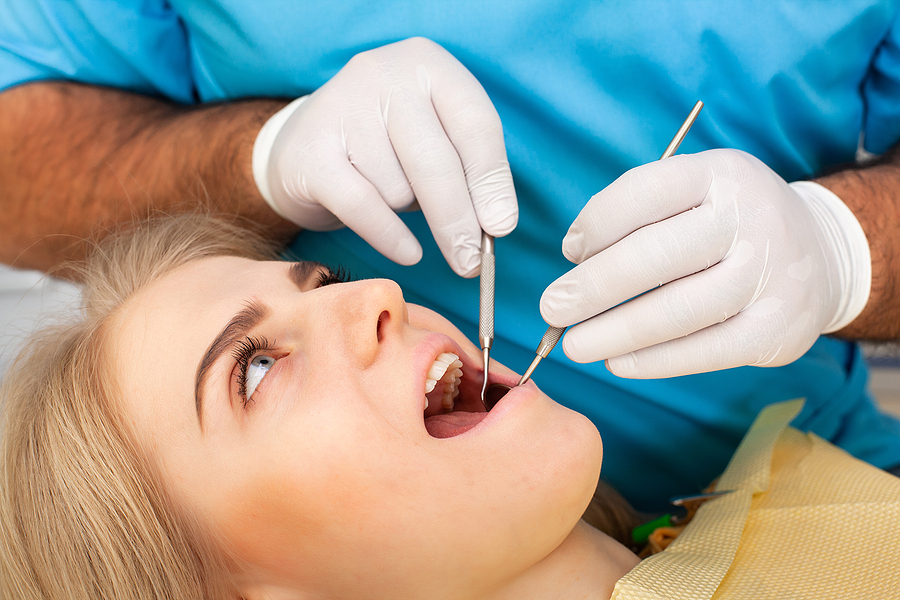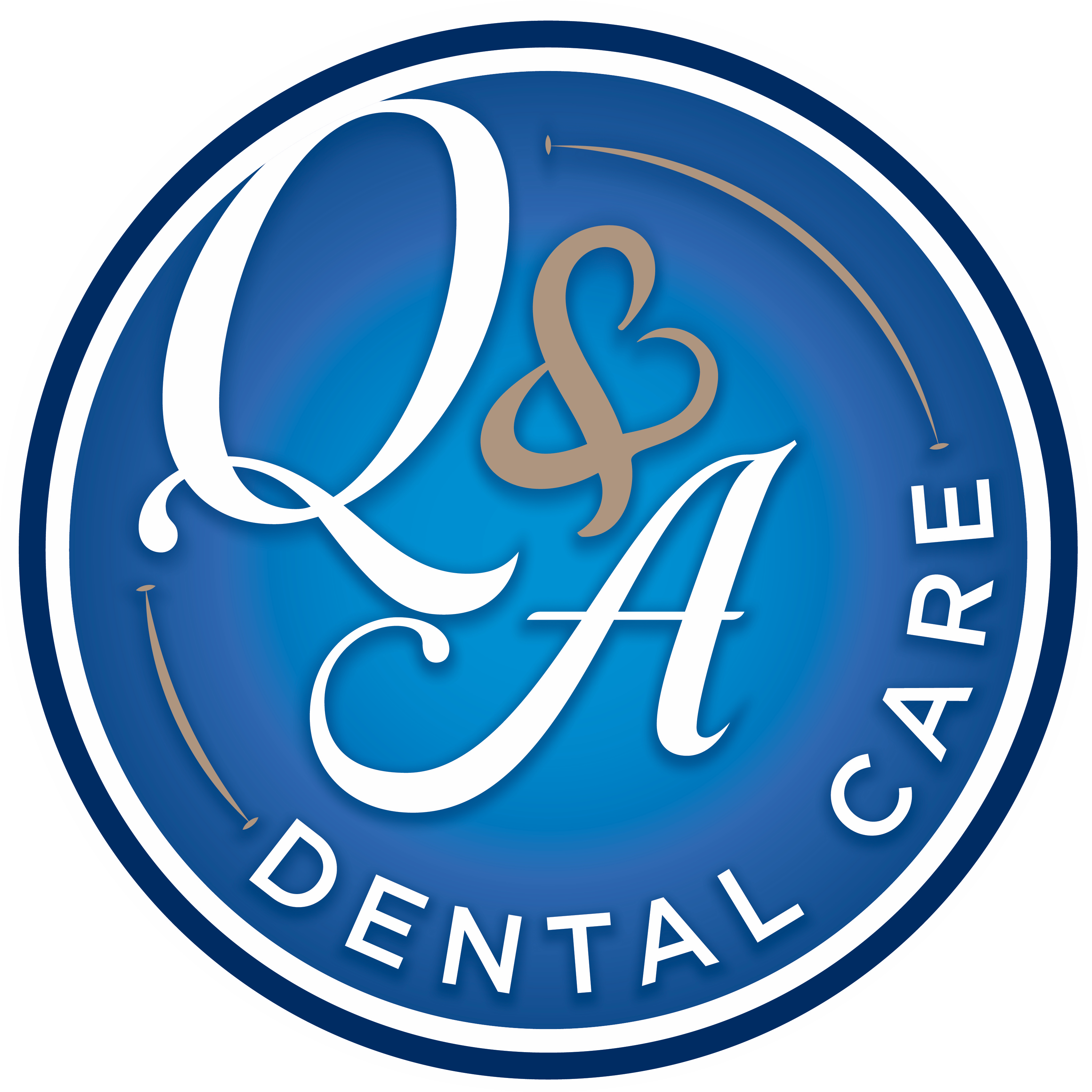While our teeth are designed to last a lifetime, there are times when a tooth extraction becomes necessary for maintaining oral health. Whether due to severe decay, infection, overcrowding, or other dental issues, tooth extractions are a common and routine procedure in dentistry. At Q & A Dental Care in Macedonia, OH, Dr. Quentin Montgomery and his team provide professional, compassionate care to ensure that extractions are performed safely and with minimal discomfort.

Why Do I Need a Tooth Extraction in Macedonia, OH?
Tooth extractions are often recommended when a tooth is damaged beyond repair or poses a risk to your overall oral health. While extractions are generally considered a last resort, they are sometimes the best solution for addressing specific dental problems. Some common reasons for a tooth extraction include:
Severe Decay
When a tooth is severely decayed and cannot be restored with a filling, crown, or other restorative treatment, extraction may be necessary. The decay may have compromised the tooth to the point where it cannot support a restoration, making extraction the most viable option.
Infection or Abscess
If a tooth becomes infected and the infection cannot be controlled with antibiotics or root canal treatment, extraction may be required to prevent the spread of infection to surrounding teeth or tissues. In cases of severe abscesses, removing the affected tooth is often the most effective way to stop the infection from spreading.
Overcrowding
In some cases, tooth extraction may be necessary to create space for orthodontic treatments, such as braces or clear aligners. If there is not enough space in the mouth for all the teeth, extracting one or more teeth can help facilitate proper alignment and improve bite function.
Periodontal Disease
Advanced gum disease (periodontal disease) can lead to significant bone and tissue loss around the teeth. If a tooth becomes loose because of gum disease, it may need to be extracted to prevent further damage and infection to the surrounding structures.
Wisdom Teeth
Wisdom teeth, also known as third molars, are commonly extracted, especially when they cause pain, infection, or damage to adjacent teeth. These teeth often become impacted (trapped beneath the gum line) or fail to fully erupt, leading to problems with alignment and oral health.
Trauma or Injury
Accidents or injuries that cause severe damage to a tooth may require extraction if the tooth cannot be restored or repaired. A fractured or broken tooth that is beyond repair may be removed to prevent further complications.
Tumors or Cysts
In some cases, tumors or cysts may develop around a tooth or in the jawbone, leading to the need for tooth extraction to prevent further complications or to allow for the treatment of the underlying condition. Contact us to learn more.
Types of Tooth Extractions
There are two main types of tooth extractions: simple extractions and surgical extractions. The type of extraction you will need depends on the condition of the tooth and its accessibility.
Simple Extraction
A simple extraction is typically performed when a tooth is visible above the gum line and can be easily removed. This type of extraction is usually done under local anesthesia to numb the area, ensuring that the patient is comfortable throughout the procedure. Dr. Montgomery will then use specialized dental instruments to loosen the tooth and carefully remove it from the socket.
Simple extractions are often performed for teeth that are damaged by decay, infection, or trauma and are straightforward to remove without the need for surgical intervention.
Surgical Extraction
Surgical extraction is necessary when a tooth is not easily accessible or has not fully erupted through the gums. This type of extraction is commonly performed for impacted teeth (such as wisdom teeth) or teeth that have broken off below the gum line. Surgical extractions require more extensive preparation and may involve making an incision in the gum tissue to access the tooth.
In some cases, the tooth may need to be broken into smaller pieces for easier removal. Dr. Montgomery may use local anesthesia along with sedation options to ensure that you are comfortable during the procedure. Surgical extractions are typically followed by a longer recovery period compared to simple extractions.
The Extraction Procedure
Whether you need a simple or surgical extraction, the procedure is generally safe and well-tolerated. Here is an overview of the typical tooth extraction process:
Consultation and Examination
Before performing the extraction, Dr. Montgomery will conduct a thorough examination of your mouth, review your medical history, and take X-rays to assess the condition of the tooth and its surrounding structures. Based on this information, he will determine the best approach for the extraction.
If you have concerns about the procedure, Dr. Montgomery will take the time to explain the process in detail and address any questions you may have.
Anesthesia
To ensure that the extraction is pain-free, Dr. Montgomery will administer local anesthesia to numb the area around the tooth. If you are undergoing a surgical extraction, additional sedation options may be offered, such as nitrous oxide (laughing gas) or oral sedatives, to help you relax during the procedure.
Tooth Removal
For a simple extraction, Dr. Montgomery will use specialized instruments to gently loosen the tooth from the surrounding bone and tissue. Once the tooth is sufficiently loosened, it will be carefully removed from the socket.
For a surgical extraction, an incision will be made in the gum tissue to access the tooth. If the tooth is impacted, it may need to be broken into smaller pieces for easier removal. The surgical area will be carefully cleaned to prevent infection.
Postextraction Care
After the tooth is removed, Dr. Montgomery will provide instructions for postsurgical care to ensure proper healing. This may include recommendations for pain management, antibiotics to prevent infection, and advice on how to care for the extraction site.
In some cases, sutures may be used to close the incision, and they will dissolve on their own over time. Dr. Montgomery will schedule a follow-up visit to monitor your recovery and ensure that the area heals properly.
Recovery After a Tooth Extraction in Macedonia, OH
Recovery after a tooth extraction depends on the complexity of the procedure and the type of extraction performed. Here’s what you can expect during the recovery process:
Immediate Aftercare
After the extraction, you may experience some swelling, bruising, and mild discomfort. Dr. Montgomery will provide pain medications to help manage any discomfort. Ice packs can be applied to the outside of the face to reduce swelling.
For the first 24 to 48 hours, it is important to follow the aftercare instructions carefully. Avoid sucking motions (such as using a straw) or vigorous rinsing, as this can dislodge the blood clot that forms in the socket, leading to a condition called dry socket.
Dietary Restrictions
You will be advised to stick to soft foods and liquids for a few days after the extraction. Avoid hot, spicy, or hard foods that could irritate the extraction site. Drinking plenty of water and maintaining proper hydration are also important during the recovery process.
Healing Timeline
For a simple extraction, the initial healing period usually takes about one to two weeks. The gum tissue will begin to heal, and the swelling will subside. If stitches were used, they would dissolve on their own within a few weeks.
For surgical extractions, the healing process may take longer, typically around three to four weeks. This is because the bone and gum tissue could take a few months to fully heal, especially if the extraction was part of a treatment plan that includes further restorative work, such as dental implants.
Follow-up Visits
Dr. Montgomery will schedule follow-up visits to ensure that the healing process is progressing as expected. During these visits, he will check for signs of infection, monitor the healing of the extraction site, and address any concerns you may have.
Conclusion
Tooth extractions, though often a last resort, are sometimes necessary to protect your oral health and prevent further complications. At Q & A Dental Care in Macedonia, OH, Dr. Quentin Montgomery offers expert care and precise techniques to ensure that extractions are performed safely, efficiently, and with minimal discomfort.
If you have been advised to undergo a tooth extraction or if you are experiencing symptoms that may indicate a need for extraction, we encourage you to schedule a consultation with Dr. Montgomery. He will thoroughly evaluate your situation, explain your options, and provide the highest quality of care to restore your oral health.
By following Dr. Montgomery's guidance and taking proper care during the recovery period, you can ensure a smooth and successful healing process, leading to a healthier, more comfortable smile.
Experience personalized, compassionate dental care with Dr. Quentin Montgomery at Q & A Dental Care in Macedonia, OH. Call us today at (330) 583-1059 or (330) 888-1299 to schedule your appointment, or visit us at 1011 East Aurora Rd Suite 1, Macedonia, OH 44056.
